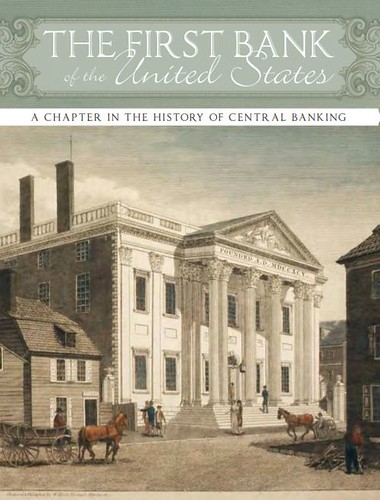
PREV ARTICLE
NEXT ARTICLE
FULL ISSUE
PREV FULL ISSUE
FEDERAL RESERVE BANK PUBLICATIONSRonald Fritz writes:"The various Federal Reserve banks occasionally publish booklets or articles that would be of interest to numismatists. Here are links to some article/pamphlets published by the Federal Reserve Bank of Philadelphia."
Thanks. There are a number of these that have been published and distributed over the decades, but I'm not aware of a bibliographic listing of all of them. That would be a useful guide for including them on the Newman Numismatic Portal as a central repository. Does anyone have a list of these, or know where to find one? Here are the ones hosted on the Philadelphia Fed site. -Editor
Benjamin Franklin And the Birth of a Paper Money Economy
No other American was involved over as long a period of time with so many different facets of colonial paper money as was Benjamin Franklin — certainly no other American with such a preeminent stature in science, statesmanship, and letters. Franklin arrived in Philadelphia the year paper money was first issued by Pennsylvania (1723), and he soon became a keen observer of and commentator on colonial money. He wrote pamphlets, treatises, and letters about paper money. He designed and printed paper money for various colonies. He entertained ideas about and proposed alternative monetary systems. As an assemblyman for the colony of Pennsylvania, he was involved in the debates during the 1740s and 1750s over the management of that colony's paper money. As a lobbyist for various colonies to the British court, he dealt with conflicts over colonial paper money that arose between Britain and her colonies in the 1760s and 1770s. Finally, at the end of his life as one of the preeminent Founding Fathers at the 1787 Constitutional Convention, he participated in constitutionally ending the first epoch and so helped usher in the second epoch of paper money in America. Franklin is arguably the preeminent authority on paper money in America in this period. To read the complete publication, see:
The First Bank of the United States
To read the complete publication, see:
The Second Bank of the United States
Six men figured prominently in establishing the second Bank of the United States (commonly called the Second Bank): financiers John Jacob Astor, David Parish, Stephen Girard, and Jacob Barker; Alexander Dallas, who would become Secretary of the Treasury in 1814; and Representative John C. Calhoun of South Carolina. These men thought that re-establishing a national bank would solve some of the country's economic woes. To read the complete publication, see:
THE STATE AND NATIONAL BANKING ERAS
Instead, the U.S. banking system during this time is generally divided into two periods: the state, or free, banking era, which ran approximately from 1837 to 1863, and the national banking era, which lasted roughly from 1863 to 1913. Also, the United States still had no uniform national currency. State-chartered banks issued their own banknotes, and some nonfinancial companies issued notes that also circulated as currency. For example, railroads issued notes to fund construction projects, and other companies such as the New Hope Delaware Bridge Company were allowed to issue notes as well. Both the railroad and bridge company notes were used as currency. To read the complete publication, see:

Wayne Homren, Editor The Numismatic Bibliomania Society is a non-profit organization promoting numismatic literature. See our web site at coinbooks.org. To submit items for publication in The E-Sylum, write to the Editor at this address: whomren@gmail.com To subscribe go to: https://my.binhost.com/lists/listinfo/esylum All Rights Reserved. NBS Home Page Contact the NBS webmaster 
|



